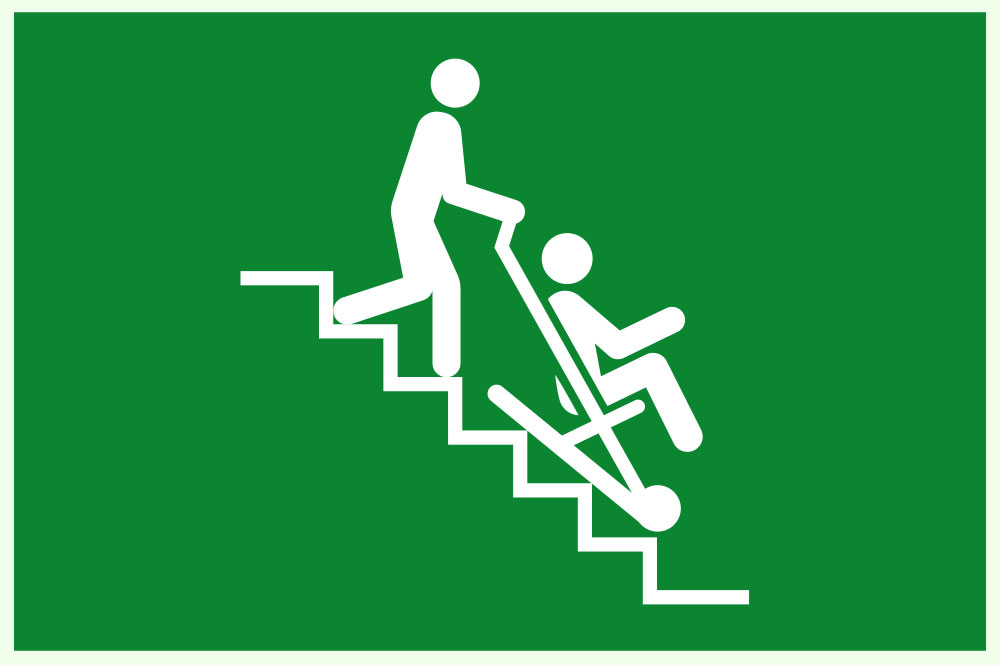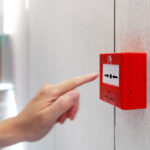
If you run a business with five employees or more, you need a fire risk assessment for your workplace. It doesn’t matter what industry you’re in or how careful you are.
As an employer, you must assess, record and control the fire risks in your workplace. And you often have to do this on your own, regardless of your background or expertise.
That’s where a fire risk assessment template comes in handy. You can use it to simplify and speed up the process while ensuring you’re not missing any critical details.
Our guide will explain how to use a template and what to include in it. You’ll be able to comply with fire safety legislation and rest easy knowing your staff and property are safe from the disaster of a workplace fire.
What are Your Fire Safety Duties as an Employer?
Fire safety legislation has changed over the last two decades. The Regulatory Reform (Fire Safety) Order 2005 – known as the Fire Safety Order – simplified the law and introduced a risk-based approach to fire safety.
The Fire Safety Order also created a new duty holder role – the responsible person.
It can vary, but generally, employers and those in control of a property, like building managers, are responsible. The responsible person is ultimately responsible for fire safety in their workplace or non-domestic premises.
If you’re the responsible person, you must:
- Carry out and review a risk assessment
- Share the risk assessment findings with employees
- Put in place and maintain fire safety measures, such as fire doors or extinguishers
- Plan for a fire emergency, including evacuation procedures
- Give staff sufficient fire safety training and information
Fire Risk Assessment Training
Our Fire Risk Assessment Training equips trainees with the knowledge and skills to conduct effective fire risk assessments and enhance workplace fire safety. It teaches them how to identify potential fire hazards and implement safety measures to eliminate or control them.
Can Anyone Else Complete the Risk Assessment?
The responsible person can delegate specific fire safety tasks, including the fire risk assessment, to other competent individuals.
You must be sure that the person completing any health and safety duty on your behalf is competent, however. The Health and Safety Executive (HSE) defines competence as the sufficient combination of skills, training and experience to do the job safely.
No universally recognised qualification makes someone competent. As a responsible person, you must determine if the person you’ve delegated to is up to the task.
You can hire fire safety consultants to complete your fire risk assessment if you have the budget. Or you can train one of your employees to do it.
Keeping it in-house can be more affordable and straightforward. Current employees should already have a good awareness of your premises and operations so they can produce a more detailed assessment specific to your business.
What’s the Point of Completing a Fire Risk Assessment?
Risk assessments are not just tick-box exercises. They’re essential fire safety tools that underpin all responsible person’s fire safety duties. They help you:
- Identify hazards and eliminate or control them to prevent fires
- Determine what fire safety measures are needed for your specific workplace
- Plan evacuation routes and emergency procedures
- Develop safe working practices and train your employees in fire safety
Putting time and effort into a risk assessment makes every other fire safety measure easier to implement and more effective. You’ll also be compliant with crucial fire safety legislation.
What to Include in a Fire Risk Assessment
The fire risk assessment template outlines everything you must include.
It should be a reasonably straightforward process. And for smaller businesses or low-risk environments, you should be able to follow the template exactly.
You might need to adjust it or seek expert advice for larger properties or more complex workplaces, however. It’s up to you as the responsible person to decide if you (or the person you’ve delegated to) are up to the task. You can always speak to your local fire and rescue authority for support.
But the approach is the same regardless of the size or complexity of the premises. The HSE says a suitable risk assessment should follow five steps:
1. Identify Hazards
You need to check your workplace or property for potential ignition sources. It helps to consider the three elements required to start a fire (known as the fire triangle). These are:
- Heat (naked flames, overheating machinery, electrical sparks, heaters, etc)
- Fuel (paper, wood, textiles, flammable liquids, etc)
- Oxygen
You should look for places where these three elements could meet and start a fire.
For a low-risk office environment, this process should be reasonably simple. The template may not be suitable for industrial, construction or manufacturing sites, however. These types of workplaces will likely have additional hazards not included in the template.
2. Assess Who Is at Risk
After identifying the hazards, you must determine who’s at risk if a fire breaks out.
The obvious answer is everyone on your property, including visitors. And this is absolutely true. But there will possibly be employees or occupants who may be particularly vulnerable.
You may have less physically able employees who need extra consideration and adjustments when planning for an emergency. Or your occupants may include children or older adults who will also need additional assistance.

3. Eliminate or Control the Risks
Now you’ve identified the hazards and know who’s vulnerable, it’s time to start eliminating or controlling the risks.
You might already have control measures like smoke alarms or fire extinguishers. You should record these and then consider if they’re sufficient. Do you have the correct type of fire extinguisher for the class of fires that are likely to happen in your workplace, for example?
There is also a hierarchy of risks to consider, which we’ve explored before. Basically, your priority should be to eliminate any risk entirely. If that’s impossible or impractical, you need to introduce control measures that reduce the level of risk.
The HSE acknowledges that you can’t remove risk entirely from a workplace. You must do your best to eliminate or control any foreseeable risks.
4. Record, Plan and Train
You also need to include your evacuation plan. Consider which type of plan is suitable for your property and make sure every person who is on (or might visit) your premises is accounted for.
This stage of the fire risk assessment also requires you to review measures that will limit the spread of fire and help people evacuate during an emergency. These measures include fire exit signs, extinguishers and fire doors. And remember, it’s not enough just to have these things. Each one needs to be regularly inspected and maintained to be effective.
You then need to train your staff. Fire safety legislation states every employee needs sufficient fire safety training, whatever their role. You should appoint fire marshals to support evacuations if you have a larger workplace. You will need to provide these marshals with additional training to do so.
The training should include evacuation drills. Regular rehearsal lets employees practise evacuation plans, making them less likely to panic or make a mistake in a real emergency. Drills also allow you to safely test your plans and ensure nothing needs to be adjusted.
5. Review
You’ve completed your fire risk assessment. But it doesn’t mean you’re finished.
Good fire safety is an ongoing exercise. You must regularly review your risk assessment and fire safety measures to ensure they’re still adequate.
Fire safety legislation doesn’t specify what ‘regularly’ means. Again, it’s up to you as the responsible person to decide when to review your assessment. It’s suggested you check your assessment quarterly. But two conditions should trigger an immediate review. These are:
- After a near miss or actual fire emergency
- After significant changes to your property or business operations
How to Make Your Fire Risk Assessments More Effective
Using a template speeds up the process and makes it easier for first-timers. But it can’t possibly account for every workplace or building. You still need the relevant skills, experience and training to make sure you’re using it correctly. Otherwise, you’re leaving your employees and workplace vulnerable to the potential devastation of a fire. You’ll also be exposed to legal action for non-compliance.
Our Fire Risk Assessment Training will teach you what you need to know to safely carry out your duties. You’ll learn how to spot hazards, understand what you can do to control them and develop the knowledge needed to complete your own risk assessments.





















